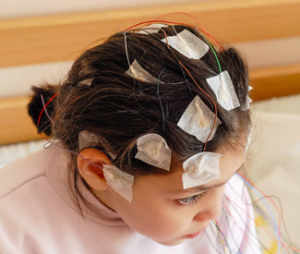Spasticity is a relatively common neurological condition that, according to elite research firm Johns Hopkins, impacts upwards of 12 million people worldwide. It is a major feature of diseases such as multiple sclerosis and cerebral palsy.
The symptoms associated with spasticity can, in some cases, severely negatively affect the quality of life of patients and caregivers. Optimal treatment strategies can reduce the burden of this condition and improve the day-to-day comfort, functionality, and mobility of patients.
Here, we’ll explore what spasticity is, what causes it, its associated symptoms, and how neurologists are pioneering new treatments to alleviate its impact on patients’ well-being.
What is spasticity?
Spasticity is a condition characterized by continual muscle contractions. Normally, the movement of so-called “voluntary muscles” of the “voluntary nervous system” (in clinical literature, called the “somatic nervous system“) are controlled by the brain, exercised at will as necessary as we move through the world.

Patients affected by spasticity, in contrast, do not exercise sufficient voluntary control over these muscles’ movements. This inability to regulate their contraction leads to stiffness of the muscles that can interfere with movement, speech, and walking as well as causing a multitude of other symptoms.
What causes spasticity?
Spasticity is usually caused by injury to the part of the brain or spinal cord that controls voluntary muscles. Many diseases and injuries can damage these areas, including:
- Spinal cord injury from accidents, tumors, or infections
- Multiple sclerosis. Up to 80% of multiple sclerosis patients experience spasticity.
- Cerebral palsy. Similarly, up to 80% of cerebral palsy patients experience spasticity.
- Strokes
- Brain tumors
- Head injuries. Blows to the head – for example, from sports injuries or car accidents – affect brain function and can impair its ability to correctly direct electrical signaling throughout the somatic nervous system.
- Metabolic diseases
- Genetic defects. Genetic aberrations, as well as metabolic conditions, can mimic the symptoms of cerebral palsy, including by causing spasticity.
- Lack of oxygen to the brain from any cause. Impaired blood flow to the brain is called cerebral hypoxia. Spasticity is one of the symptoms of hypoxia. Seizures, traumatic head injuries, and surgical complications can all cause hypoxia.
What are the symptoms of spasticity?
Symptoms of spasticity vary widely, depending on what part of the brain or spinal cord is affected and how severe the damage is. They can include:
- Increased muscle tone
- Overactive reflexes
- Chronic pain from the constant contraction
- Developmental delays
- Inability to walk
- Inability to do activities of daily living such as feed, bathe, dress, or otherwise care for yourself
- Abnormal posture
- Contractures: permanent muscle and tendon contraction
- Orthopedic abnormalities
The Ashworth Scale for clinically assessing spasticity
Dr. Bryan Ashworth developed the Ashworth Scale in 1964 while treating multiple sclerosis patients. The scale was modified in 1987 for greater accuracy.
Doctors use the Ashworth Scale to assess the severity of spasticity in a patient presenting with symptoms.
It runs from 0-4, with 0 being no spasticity and 4 being “rigid in flexion or extension.”

How do neurologists treat spasticity?
As of 2022, the kind of damage to the brain and spinal cord that causes spasticity cannot be repaired. However, have hope — treatments for spasticity do exist.
Treatments can either mitigate the symptoms of spasticity or relax the nervous system to calm its activity and produce less frequent or less intense contractions of the muscle.
They include:
- Pharmaceutical medications such as Baclofen, Pregabalin, Gabapentin, Zanaflex to relax muscles
- Botulinum toxin injections into the spastic muscles to relax them
- Surgery to lengthen a contracted tendon
- Baclofen pump: A device implanted in the lower abdomen with a small tube threaded into the fluid around the spine-this suppresses the control of the spine over muscles leading to muscle relaxation
- Physical, Occupational, and Speech therapies
- Functional electrical stimulation
- Stretching regimens. Yoga, for example, is suggested as a complementary therapy for MS patients to alleviate their symptoms such as spasticity.
- Cannabinoids. Non-psychoactive components of the cannabis plant, such as CBD, have been demonstrated to “have modest efficacy in reducing muscle spasticity in adults with multiple sclerosis.”
- Cryotherapy. Evidence shows that applying cold packs at 20-minute intervals can lower muscle temperature and, in turn, reduce spasticity.
Usually, the strategy to treat spasticity involves a multi-pronged, individualized approach. There is no magic bullet. Often, treatment strategies require adjustment over time to find out what works and what doesn’t. Every patient responds to treatment uniquely.
Your neurologist will design the proper treatment regimen on a case-by-case basis.
Get more information about spasticity from authoritative sources
Further information on spasticity is available from:
We’re always available at Child Neurology Center of Northwest Florida to answer any questions you might have regarding spasticity and its treatments. Don’t hesitate to contact us – we’re here to help patients and their caregivers explore their pathway to recovery.




